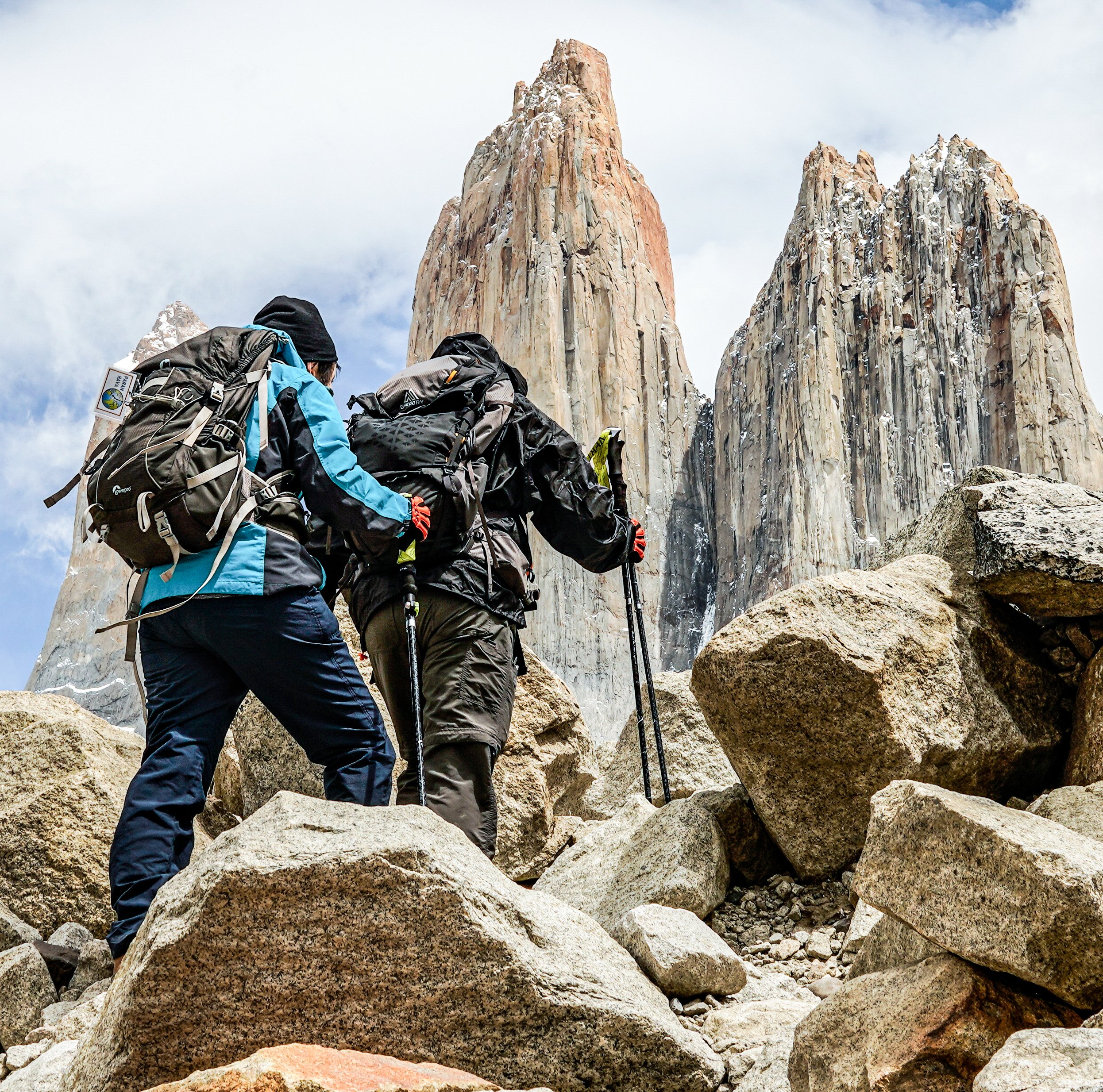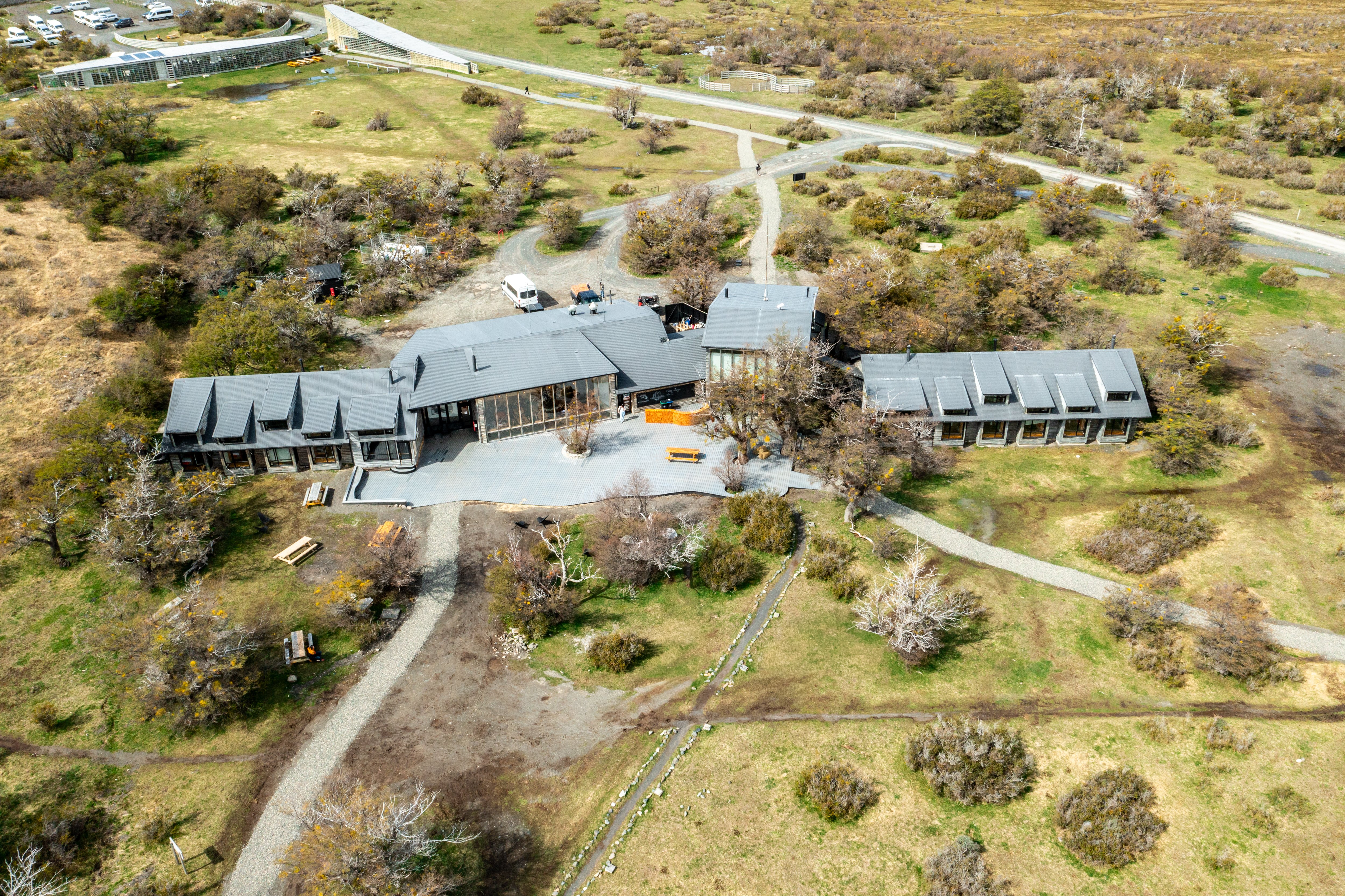Weather in Patagonia
Discover the magic of the Patagonian countryside, where each day brings you a taste of the region’s ever-changing weather. In Torres del Paine, we often say that you can experience all four seasons in a single day. However, during Hotel Las Torres’ operating season from October to April, each month brings unique weather conditions that will be part of your experience in the park. Whether you want to feel the gusts of Patagonia’s famous winds, see the snow that crowns the mountain tops, or simply bask in sunny days, this guide will help you to choose the month that best suits you.

OCTOBER – Say goodbye to winter and hello to adventure
At the start of the season in October, winter begins its retreat from Patagonia, meaning that the first few weeks are marked by warming temperatures following the cold season. Not for nothing is it the month when we welcome hundreds of visitors from all over the world to this corner of the continent.
Highs during the month range from 10 to 14 °C (50–57.2 ºF). Remember to always bring a good jacket with you so you can venture out into the wild while staying comfortable.
In terms of precipitation, rainfall is less common at the beginning of the month and tends to pick up towards the end of the month, but not enough to spoil your adventure. The wind does not reach its peak strength this month, but it does bring a noticeable wind chill.
The days are significantly longer in October. At the beginning of the month, we enjoy about 13 hours of daylight, which stretches to almost 15 hours by the end of the month. So if you want to get a taste of Patagonian winter, feel the cold of the far south of the world, and see the peaks of Torres del Paine National Park covered with snow, October is the month to visit.

NOVEMBER – Spring emerges in Patagonia
The second month of the season brings considerably warmer temperatures than the last one, with lows ranging from 3 to 7 °C (37.4–44.6 ºF), while highs can reach 16 °C (60.8 ºF).
Like October, November is a dry month, although there are occasionally scattered showers on the west side of the park, where the ocean has a stronger influence on the weather.
As for wind, gusts can reach average speeds of 60 km/h (37.3 mi/h), and are more common in the afternoon, so we recommend saving the mornings for more tranquil activities.
As for daylight, it continues to increase in November, and we can have up to 16 hours of daylight. Be sure to visit during these months to see Patagonian wildlife roaming the park after the harsh winter. You may be lucky enough to come across a puma, a red fox, or a guanaco.
.jpg?width=1200&height=600&name=Base%20Torres%202%20(1).jpg)
DECEMBER – Welcome to summer in Patagonia
In the last month of the year, austral summer returns to Torres del Paine National Park, the favorite time of year for most visitors.
Highs can range from 14 to 20 °C (57.2–68 ºF), and ever higher on sunny days. At night, the temperature can drop to 5 °C (41 ºF).
Just as in the previous two months, December is relatively dry, but Patagonia may always surprise you with some scattered, light rains. As for snow, much of it has melted in the lower elevations, but can still be glimpsed on the higher peaks.
In December, the wind begins to pick up compared to previous weeks and can reach speeds of 70 km/h (43.5 mi/h) or more.
With the arrival of nicer weather, there is a lot of wildlife moving in the park. If photographing native birds and mammals is your thing, December is a great time to do it.
.jpg?width=1200&height=600&name=Cabalgatas_6%20(1).jpg)
JANUARY – Summer in all its splendor in Torres del Paine
The new year brings the warmest and most consistent weather of the season to Torres del Paine National Park. If you don't enjoy the cold, this is the perfect time of year to explore all the wonders that the park has to offer.
Highs range from 15 to 24 °C (59–75 ºF), and sometimes even higher on sunny days. Lows are between 6 and 11º C (43–52 ºF).
As for precipitation, January is one of the driest months of the year, so rain is very rare, but Patagonia sometimes surprises us with light daytime drizzle that will soon clear up.
January also offers the longest days of the year, with about 17 hours of daylight, so be prepared for clear skies until the evening hours. This phenomenon tends to wow your friends and family back home when you tell them what time it is and how much light is left in your day.

FEBRUARY – Continue to enjoy the austral summer at its best
By February, summer has settled in, so temperatures will be very similar to those of January. Just like the last one, this is a dry month, so rainfall is rare and extremely sporadic.
February, like January, offers many chances to see wildlife in all its glory, so always have your camera ready for guanacos, foxes, and pumas that may appear during your outings.
We remind you to always dress in layers in the park, as the weather can always change during your excursions. Always have your windbreaker, sunglasses, and sunscreen handy to reapply from time to time.

MARCH – Summer makes its exit and the colors of autumn emerge
With the arrival of March, temperatures begin to drop as we approach autumn. Daytime highs are around 18 °C (64 ºF) and the wind quickly brings a chill in the afternoon. Lows in Torres del Paine range from 3 to 7 °C (37–45 ºF).
Precipitation also starts to increase in March, but it is still light and not very frequent. Likewise, the Patagonian winds begin to let up, with their average speed hovering between 50 and 60 km/h (31–37 mi/h).
The days begin to shorten in March, and on average there are 13 to 14 hours of daylight, which does not detract from the perfect conditions for both morning and afternoon activities.
March is also when the leaves begin to change, giving a coppery glow to the rugged landscape. If you have already fallen in love with Torres del Paine, you will fall in love again with Patagonian autumn.
.jpg?width=1200&height=600&name=paisaje%20-%20cerro%20paine%20primer%20mirador%20-%20oto%C3%B1o%20invierno%20(1).jpg)
APRIL – Welcome to autumn in Patagonia
Autumn makes its full debut in April. You can witness the forests tinged with shades of orange and yellow and take some of the year's best photographs for those who love this season.
Temperatures drop considerably compared to January and February, with highs ranging from 8 to 15 ºC (46–59 ºF), while lows can be as low as 0 °C (32 ºF). Bringing warmer clothes will be essential to avoid missing out on the park’s adventures.
Rain begins to fall more frequently, but it is not so constant as to spoil your excursions or keep you from the experiences that Patagonia has to offer.
Daylight hours are also reduced by half, so nights are longer. This is ideal for lovers of astrophotography, who will be able to take pictures of the Patagonian stars earlier in the day.
No matter what month you visit us, Torres del Paine will always have something to offer you, from its snowy trails, its vibrant and colorful sunsets, or its unique foliage.
All that’s left is to choose your excursions. We'll be waiting for you!

.jpg)


